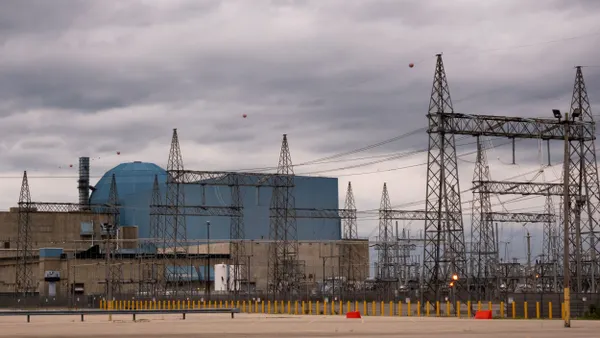Dive Brief:
- The California Public Utilities Commission has unanimously approved the merger of Southern Co. and AGL Resources, a deal which would create a combined utility with 44,000 MW of generating capacity.
- The deal would make Southern the nation's second-largest combined gas and electric utility by customer base, with 11 regulated gas and electric distribution companies serving about 9 million customers.
- The companies expect to complete the transaction in the second half of 2016. The deal is valued at $12 billion, and valued AGL at $66 per share.
Dive Insight:
California regulators have signed off on the Southern-AGL deal, and the companies say they expect to close the merger in the second half of this year.
AGL Resources is the parent company of Central Valley Gas Storage, a natural gas storage facility located in the Sacramento River valley, triggering the need for West Coast review. Commissioners voted unanimously to approve the deal, the companies said.
Once completed, the utility will control nearly 200,000 miles of electric transmission and distribution lines and more than 80,000 miles of gas pipelines. The combined utility's 80,000 miles of gas pipeline could help to reduce supply constraints for gas plants across Southern's service territories.
The deal represents a growing consolidation trend in the utility industry, pressed by stagnant load growths and declining power prices. Another factor is the Obama adminstration's Clean Power Plan, which quickly propelled utilities to look for cleaner sources of fuel to cut 32% of carbon emissions by 2030 from the power sector. Despite the stay, utilities have indicated they will continue investing in natural gas and other clean energy technologies, citing expectations of more regulations down the road.
Many utilities have sought to acquire gas infrastructure - either distribution utilities or transmission or production facilities, to take advantage of the stable returns and to lock in lower commodity prices. AGL is a distributor, so Southern's purchase will not yield a direct stake in gas production, but will give it a new foothold in the natural gas market.
In addition, those lines, while primarily used for supplying natural gas customers, could be used to help alleviate supply constraints for gas plants across Southern's service territories. Both Southern's regulated utilities and its unregulated power developer have been greatly increasing their utilization of natural gas in recent years.
Another example of a utility looking to seize opportunities in the natural gas market is Duke Energy. Duke announced last year it would buy Piedmont Natural Gas for about $4.9 billion in cash. The acquisition of the natural gas distributor would add about 1 million new gas customers to Duke's service territory.














